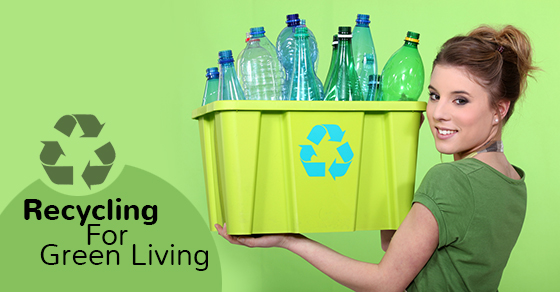We are constantly buying, using and discarding things. What we need today quickly becomes what we have no use for tomorrow. Packaging and wrapping is everywhere. The amount of waste the average Canadian household creates on a daily basis is staggering.

Fortunately, as we learn more about what our consumption and waste habits are doing to the world we live in, many people have decided to make an effort to live a more green lifestyle. If this is something you are interested in, here are five necessary recycling strategies for green living.
Separate your newspapers and cardboard
Newspaper should be kept in their own bin as they go directly into recycled newsprint. A four-foot stack of newspapers is the pulp and paper equivalent to a 40-foot Douglas Fir tree. Separate your cardboard out by tying them together and leaving them out separately for collection. Waxy or plastic coated cardboard such as pizza boxes cannot be recycled because they clog the sorting machines at the recycling facility.
Know your plastics
A plastic water bottle sitting in a landfill will not break down in your lifetime. Therefore, plastics need to be reused and repurposed whenever and wherever possible. Plastics have different grading numbers that determine how they are recycled. Numbers 1 (PET) and 2 (HDPE) are for containers, 4 (LDPE) is for bags and 7 is for mixed plastics that are not recyclable. Learn how and where certain plastics are recycled and separate them accordingly.
Know your glass
Glass is recycled by colour (clear, green and brown) and recycling centers prefer when they are separated in this manner. These types of glass are referred to as “container glass” and are generally all very recyclable. Old lightbulbs, sheet glass, mirrors or Pyrex should be kept separately from bottles as they have different compositions and melting points and will be turned or thrown away by many recycling centres.
Separate your aluminum and copper
Rinse food cans and remove lids and labels. Any aluminum foil or packaging can be recycled and is regularly used to make new mechanical components. Copper is one of the best and most energy efficient metals to recycle. The recycling of copper requires only 15% of the total energy inputs required to actually mine, smelt and refine new copper.
Recycle your electronics
Take your electronics to a specialized electronics recycling facility. Many people in our own communities still have very limited access to computers, so even something you may feel is old and outdated could be of use to someone less fortunate. Electronics recycling facilities exist in most communities. The electronics are broken down to their base components, sorted and recycled accordingly.
Living green requires effort
It is not something that happens overnight, but is a process, one by which you educate yourself and your family of the benefits and requirements of reducing your carbon and ecological footprint on this planet. We all know recycling is beneficial, but we can’t forget that it’s a task that ultimately falls upon the consumer (each and every one of us) to learn and enact. The above five recycling suggestions are a great start, though certainly not the only things you can do to make your home greener.
Contact the Junk It! team to find out what you can trash, what you can recycle, and how we can help you organize your home.
